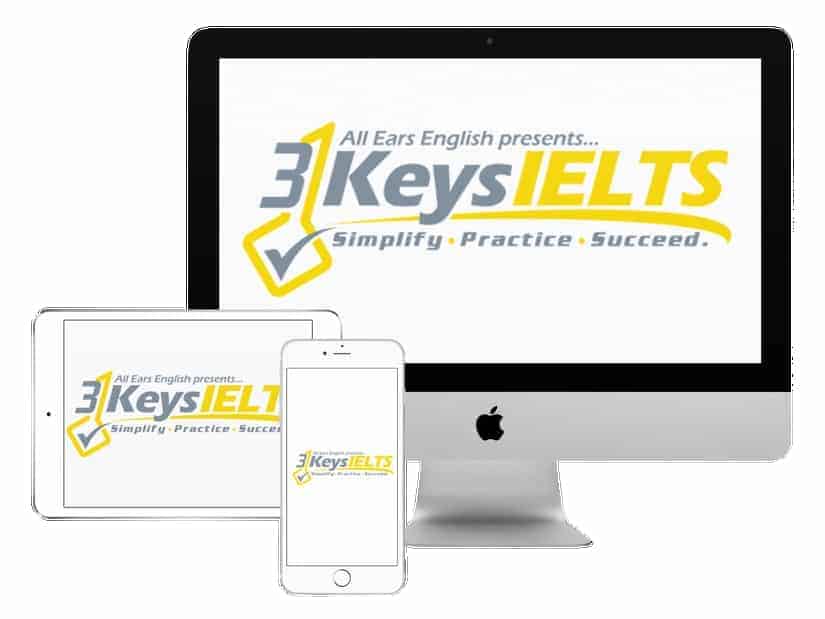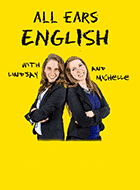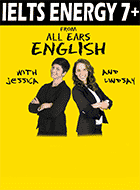Linking words are extremely important for your IELTS scores.
You must show that you can connect your ideas in a native, natural way.
These must be included on both Writing and Speaking exams.
There are different linking words and phrases depending on context.
Today we’re focusing on those that introduce examples.
Listen in to boost Fluency/Coherence and Cohesion/Coherence scores!
Why do linking words matter?
On IELTS Writing, you must be able to link ideas for the Cohesion/Coherence score.
Your sentences must flow and cannot be choppy.
You must use linking phrases to introduce ideas, examples and details.
It’s also important to use linking phrases to connect thoughts.
On IELTS Speaking, it’s also vital that you link your thoughts.
This is important for the Fluency/Coherence score.
Strategies Created By a Former Examiner

100% Score Increase Guarantee with our Insider Method
Are you ready to move past IELTS and move forward with your life vision?
Find out why our strategies are the most powerful in the IELTS world.
When you use our Insider Method you avoid the BIGGEST MISTAKES that most students make on IELTS.
Click here to get a score increase on IELTS. It’s 100% guaranteed!
Today’s question
One of our 3 Keys IELTS students asked a great question about linking phrases.
This question was in the Facebook group for our online IELTS course.
When you take our course, you can ask questions in this Facebook group.
We answer them so you are getting expert answers right away!
She asked a question about linking phrases for introducing examples.
What’s the difference between FOR EXAMPLE and FOR INSTANCE?
Which one is better for the exam?
Vicky
For example vs. for instance
These two are extremely similar and can be used interchangeably.
Neither is better for the exam, though ‘for instance’ is slightly less common.
There are higher-scoring options.
We teach these in our 3 Keys IELTS course.
We’ll also share a few today.
In addition, we’ll provide example sentences to show how to use these in IELTS essays.
Introducing examples on IELTS
Instead of ‘for example’ or ‘for instance,’ boost your vocabulary score with one of the following.
- As a shining example,
- As a case in point,
- XX is a shining example
- XX is a case in point
Because students don’t use these as often, they are higher scoring.
Be sure to use proper punctuation!
If it is at the beginning of the sentence, a linking phrase should be followed by a comma.
Shining example
‘Shining example’ has a positive collocation.
Therefore, don’t use it to introduce a negative example.
For example, we would not say ‘Vandalism is a shining example of crime.’
This is because vandalism is a negative thing and ‘shining’ implies it is very positive.
As an illustration, this example could be included in an essay about what someone should do after high school.
The main reason why every citizen should be required to volunteer for two years overseas is that it would create more empathetic members of society. My friend Todd is a shining example of this. After volunteering for Habitat for Humanity and building houses in Ecuador, he returned to Portland Oregon and has had a huge impact on creating affordable housing here in the city.
Examples follow reasons
Body paragraphs should introduce your idea and then support it with details and examples.
An essay about encouraging healthy eating might include the following:
The chief advantage of growing one’s own food is that one has healthy food immediately available. As a case in point, if I want some fresh vegetables to add to the pasta I’m making for dinner, all I have to do is saunter out to my garden and pick some zucchini, as opposed to driving all the way to a supermarket.
The organization of your essay affects your Cohesion/Coherence score.
Avoid starting paragraphs with examples as this is not cohesive.
Essays should have clear organization with ideas clear and well-supported.
How many examples?
Many students make the mistake of having several examples in an IELTS essay.
Remember that your time is extremely limited.
You don’t have time to brainstorm or write extra examples.
Instead, one example per idea is sufficient.
Most body paragraphs will only contain one idea.
As an exception, some essays ask for two ideas with a plural in the topic.
- advantages
- disadvantages
- causes
- effects
- solutions
If you must provide two ideas, such as two advantages, each can be supported by an example.
Be sure to include supporting details for each idea.
Takeaway
Linking words are vital for linking your ideas in a natural way.
Without them, sentences are choppy and incohesive.
This skill must be showcased on both IELTS Writing and Speaking exams.
You need a variety of linking phrases for both informal and formal essays and speaking questions.
For all the linking phrases you need and details on how to use them, sign up for 3 Keys IELTS!
What questions do you have from today’s episode?
Please leave a comment below.








